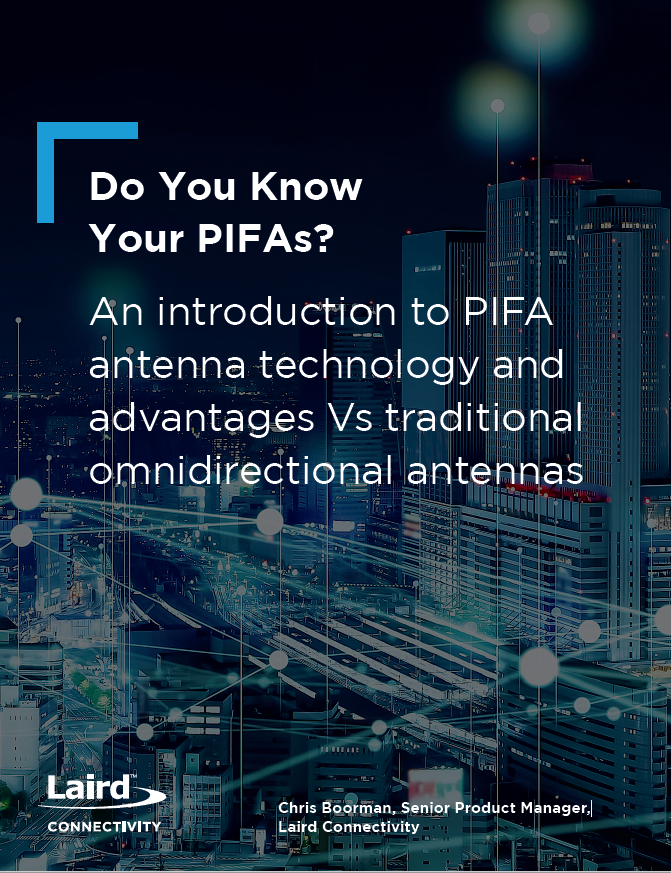
Do You Know Your PIFAs?
Published on December 2, 2021

As technology continues to evolve, RF systems and wireless connectivity become more complicated. Industries expect higher data rates, lower latency, greater reliability, and performance. In the midst of this complication, antenna selection and integration – one of the most confusing aspects – is often simply an after-thought and added on towards the end of the design process. It’s important to acknowledge that much of the success or failure of a RF system project depends on the performance of the associated antennas. RF design is certainly a challenge but following best practices and carefully considering the most effective antenna type for your design is critical.
There is a plethora of available antennas to choose from depending on your industry, RF design, and wireless technology or application. Choosing the best type can be a daunting task. There is a wide selection of antennas of various sizes, shapes, performance, and cost – all factors that are important in your selection. With all these choices and the complexity of RF design, there is no one-size-fits-all antenna solution.
Understanding various types of antennas, how they function, and in what environment they best perform, may help you select the best antenna solution for your device or system. This white paper specifically focuses on one type of antenna – the planar inverted-F antenna known as a PIFA. In this paper, we discuss what it is, how it functions, the benefits of its design, and how it compares to some other common antenna types.
 Laird Connectivity is now Ezurio
Laird Connectivity is now Ezurio